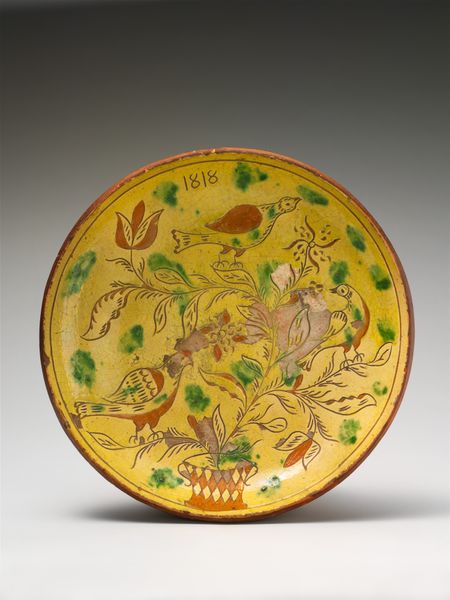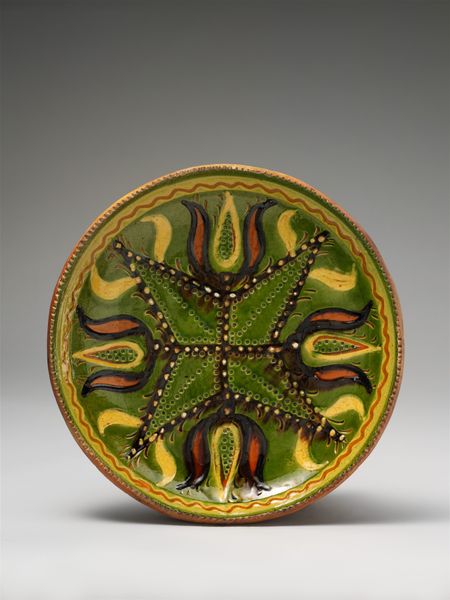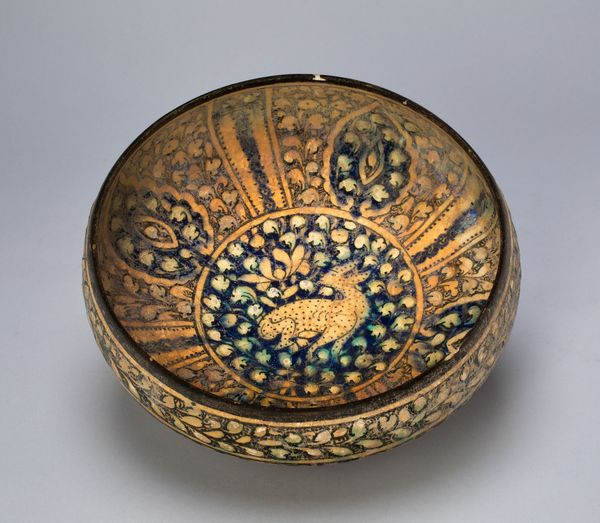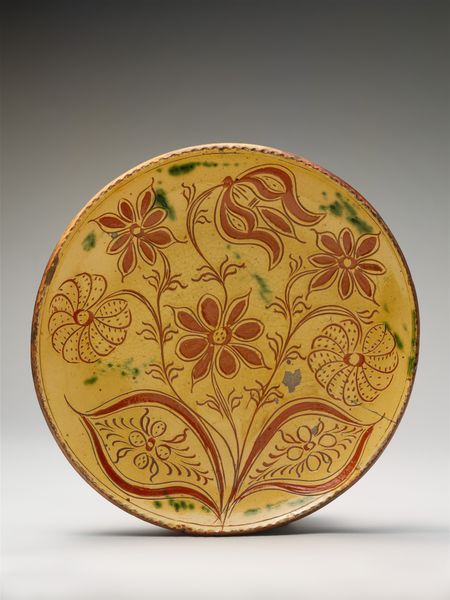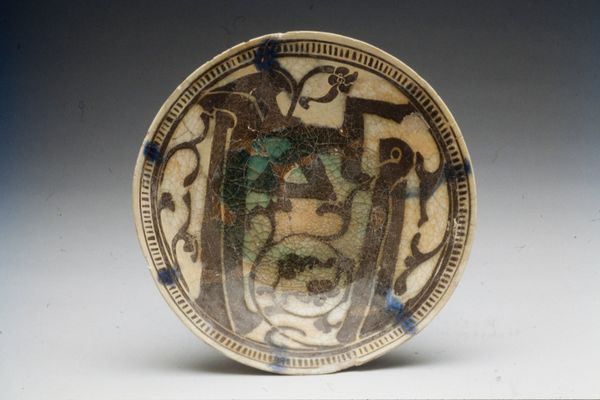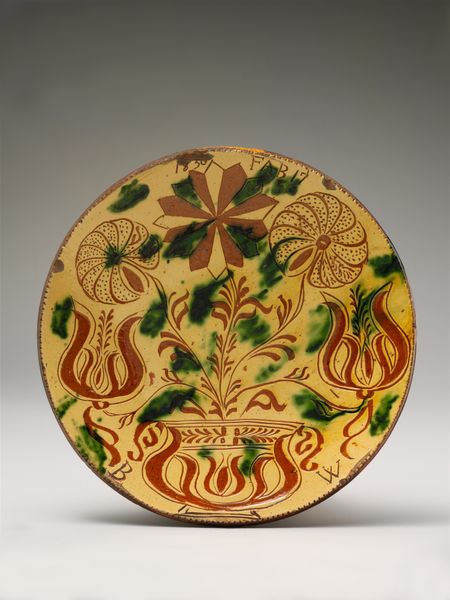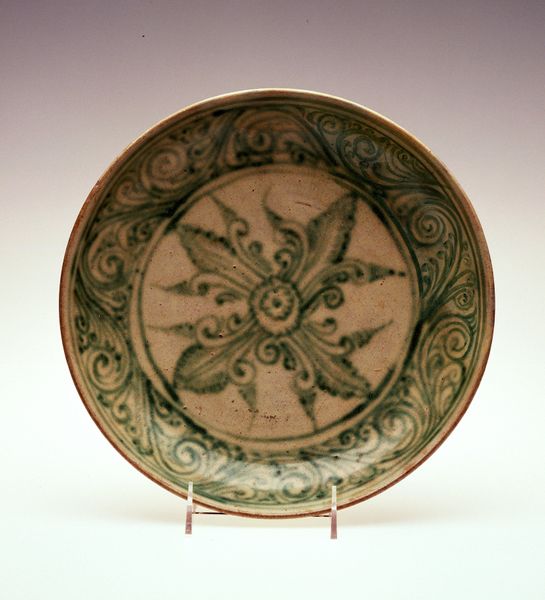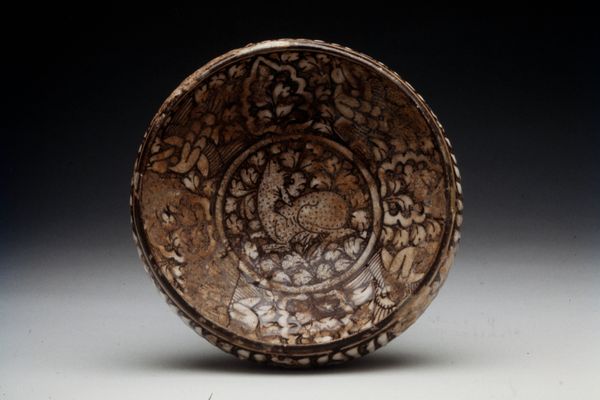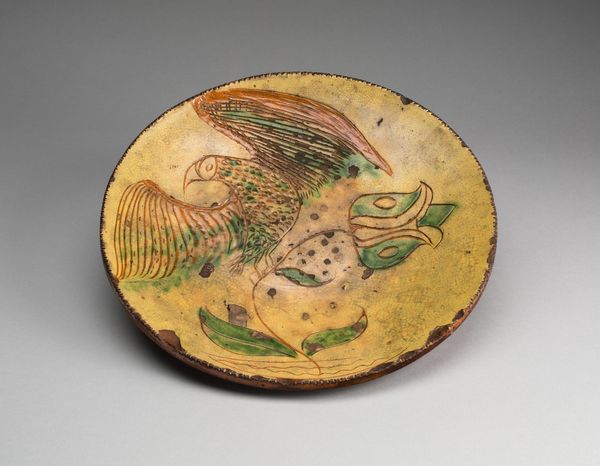
ceramic, earthenware
#
ceramic
#
earthenware
#
stoneware
#
folk-art
#
ceramic
#
decorative-art
Dimensions: H. 10 in. (25.4 cm)
Copyright: Public Domain
This earthenware plate was made around 1810 by John Neis, one of a number of Pennsylvania German potters working in the United States at the time. Such works reflect the culture of the communities which produced them, combining German techniques with the available local materials. The plate’s decoration incorporates stylized flowers, typical of folk art, while the inscription, likely a saying or motto, suggests the importance of community values. The Pennsylvania German community was historically known for its unique traditions, dialect, and craftsmanship, often maintaining a distinct cultural identity, separate from mainstream American society. These plates were not just functional items but also carriers of cultural identity, reinforcing social bonds and preserving traditions within a community. Looking at historical documents, such as settlement records, census data, and examples of fraktur art can provide insight into the cultural context and social dynamics behind these intriguing works.
Comments
No comments
Be the first to comment and join the conversation on the ultimate creative platform.

